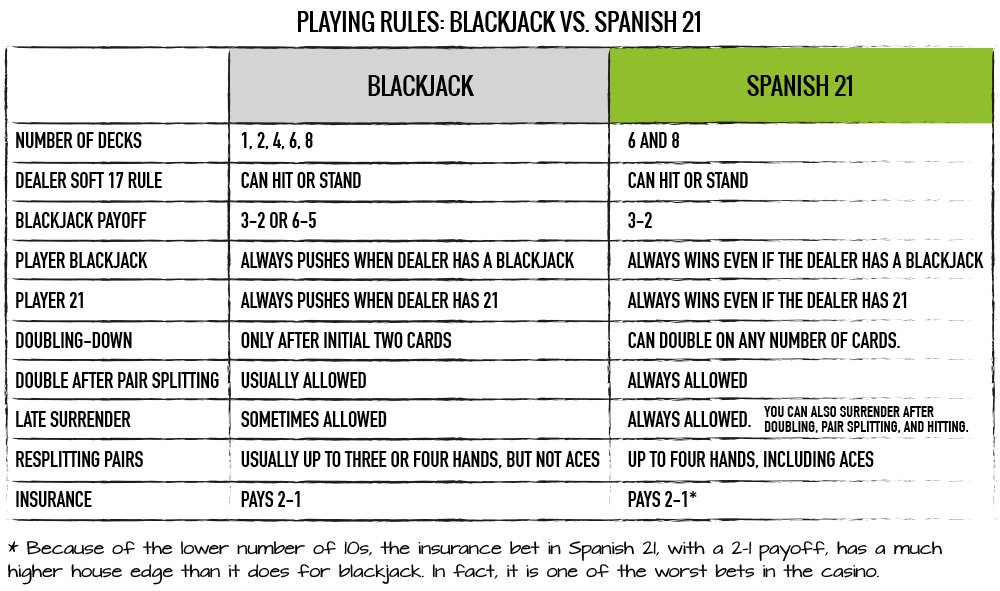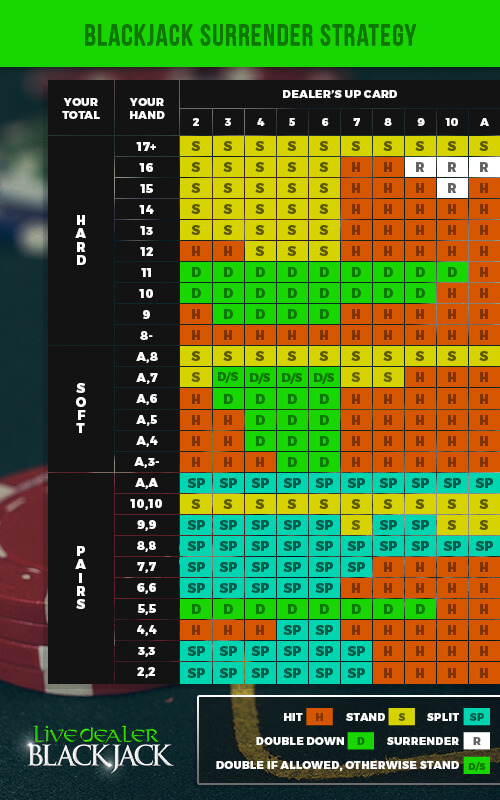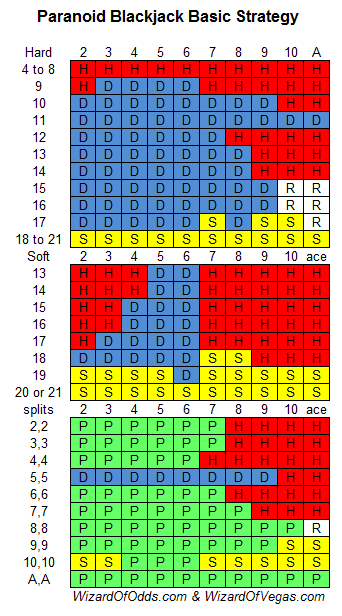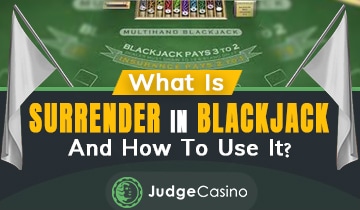Blackjack Surrender Rules
The Surrender variant of Blackjack involves the classic rules of the game and additional moves. You can stand, hit, split or double and choose to take insurance if the dealer’s up-card is an Ace. Dealers use 6 decks of 52 cards and you can select a Multi-hand game, so you can wager on 5 different hands at the same time.
At certain online casinos, you will find the option to “surrender” at some of the available blackjack tables.
- Surrender is one of the most misunderstood rules in blackjack. On the surface, it sounds like a weak move; where one is allowed to give up one’s hand early in the game and in exchange for forfeiting half of one’s bet.
- Rules of the Game Your goal in Blackjack Surrender, as in any other blackjack game, is to have a better hand than the dealer. That means having a higher hand total without going over 21. If you go over 21, you lose your bet.
Surrendering in blackjack is a form of strategy and of safe-guarding your hand when you recognize bad odds. It doesn’t make you a bad or cowardly player to surrender.
It’s also usually available for classic or American blackjack, rather than European.
Traditionally, blackjack games that offered the surrender option were for the high-roller games. So if you’re looking for the option, you may want to try the VIP Blackjack tables at your online or live casino.
Let’s take a look at the types of surrender options you’ll find. We will also break down when you should surrender, to optimize your strategy.
No surrender, Early Surrender or Late Surrender
Blackjack games will either not offer the option (“no surrender”), or offer the option at specific moments in the game.
You will be able to surrender if the dealer has an Ace as his upcard. If he does, there are chances that he may have a blackjack.
- Early: you can surrender before a dealer checks for Blackjack
- Late: after dealer has checked for blackjack and doesn’t have it
When you surrender, you get half your bet back. You will, of course, lose less money if you surrender earlier rather than later.
When To Surrender: Odds and Dealer Hands
There are a lot of strategy guides out there that will tell you when you absolutely should or absolutely shouldn’t surrender.
In the end, it really boils down to how you want to play, but it’s true that playing with the odds in mind can be lucrative.
First of all, you should know how many decks the dealer is using. If it’s a double-deck game or a 4-8 deck, then the odds will differ.
Knowing when to surrender basically depends on the dealer’s hand, and what he’s allowed to do. We’ll break down some relevant blackjack surrender terminology and then look at a few scenarios.
Blackjack Surrender Terms: Hard Hand vs Soft Hand
You will often see blackjack guides referring to a “hard” or “soft” score. This refers to the value of the ace, as the ace can be worth a 1 or an 11.
When the ace value is 1, the overall score is “soft”.
When the ace value is 11, the overall score is “hard”.
Here’s an example: a “soft 17” could be for instance, a 10+6+Ace. And a “hard 17” could be an Ace+6.
When to Surrender: Difference Blackjack Scenarios
As we mentioned further up, surrendering counts as a part of your strategy. We’ve compiled a list of recommendations-per-scenario made by blackjack experts to help you know when to surrender.

- Dealer with an ace as their upcard, must stand on 17

In this situation, if your score is anything under 16 then you may hit or stand as you please.
If your score is 16 however, surrender is your best option.
- Dealer with ace, must hit on all hard 17s
In some games, the general rule of “dealer stands on 17” will have this variant. Experts say that this decreases player edge; and so you should surrender if your score is at 15-16-17.
- Dealer with a 10-value card, must stand on 17
There are three general rules to follow here. If your score is:
- 15: surrender
- 16: surrender
- 17: stand
These are of course rules based on your odds of winning against a dealer with such a hand. If you want to risk it, you’re free to hit or stand as you please.
- Dealer with a 9, must stand on 17
Again, here are the guidelines recommended by the experts:
- 15: take a hit
- 16: surrender
- 17: stand
Blackjack Surrender Rules Card Game

Does the concept of the surrender rule in blackjack confuse
you?
You’re not alone.
We think this is the least-understood rule in blackjack. The
difference between early surrender and late surrender is
important. Improving your understanding of blackjack surrender
rules means improving your overall game strategy.
Some blackjack games allow players the option of giving up
(or “surrendering”) their hands right after the initial deal is
complete, for the cost of half of their ante bet. The idea is to
quit while you’re ahead if you feel like you don’t have a shot
at winning the hand. Surrender rules are an advantage for the
player, in that she can choose to keep half of her original bet
rather than play out her hand and lose the entire thing.
Blackjack surrenders come in two flavors: early and late.
To use the surrender rule to your advantage, it’s important
to understand the differences between the two types of
surrender.
What Is Early Surrender?
Vegas Blackjack Rules Surrender
An early surrender is when the player chooses to give up on
their hand immediately after the cards are dealt but before the
dealer checks for a natural blackjack. The early surrender
requires that players forfeit half their original wager.
The early surrender rule is the most desirable type of
surrender because it’s available regardless of whether or not
the dealer was dealt a natural. As is often the case with rules
that favor the player, the early surrender rule is rare these
days.
Why has the early surrender disappeared?
According to the Wizard of Odds, the addition of an early
surrender rules cuts into the casino’s built-in edge by 0.63%.
To put that in perspective, changing a game’s shoe from eight
decks to one affects the house edge less (+0.59%) than the
addition of an early surrender rule.
This doesn’t means that casinos won’t offer early surrender –
some do–especially online casinos.
But they compensate with other rule changes that chisel away
at the advantage you gain from the early surrender rule.
What Is Late Surrender?
The late surrender rule allows a player to give up on their
hand for the cost of half their ante, just like an early
surrender.
But unlike an early surrender, this rule requires that you
wait to see if the dealer has been dealt a natural blackjack
first. If the dealer did catch a natural, you can’t surrender,
and you’ll lose your whole wager just like if you never chose
the surrender option in the first place.
Late surrender rules don’t lower the casino’s edge anywhere
near the amount that early surrender rules do.
According to the same source at Wizard of Odds, a late
surrender rule cuts into the casino’s edge by about 0.1%–about
as much as a Doubling rule. As a consequence of its smaller
negative impact on the casino’s bottom line, you’re more likely
to see this form of the surrender rule than the early version.
Even though the reduction in the house edge is small, it’s an
advantage that’s worth seeking out.
A note on blackjack etiquette and surrender rules – it’s
common for land-based casinos to offer a late surrender without
advertising it. You should always ask your dealer if there’s a
late surrender option. Even though the player advantage is
small, the casino isn’t in the business of giving any amount of
money away.
The Difference Between Early & Late Surrender
The difference between the two is simple – early surrender
rules allow you to give up your hand for half your wager even if
the dealer holds a natural blackjack, while late surrender rules
allow you to give up half your wager only if the dealer doesn’t
hold a natural.
Surrender Strategy
The strategy for games with early surrender and games with
late surrender rules is different enough that even the ideal
playing styles are different. Here’s a basic guide to the proper
ways to play for both early and late surrender blackjack games.
When You Should Take an Early Surrender

Though the early surrender is a tempting move when you find a
table that offers it, we only recommend you consider abandoning
your wager in the following three situations:
- When the dealer shows Ace and you hold a hard total of 5 – 7 or 12 – 17.
- When the dealer shows Ace and you hold 33, 66, 77, or 88.
- When the dealer shows any 10 and you hold a hard total of 14-16.
You should hit on hard totals between 8 and 11, but up
against an Ace the early surrender rule gives you the best
possible return on pretty much every other hard hand.
These are all acceptable split hands in other situations but
against a soft dealer hand, an early surrender is the acceptable
play here.
If you draw is anything about 5-7, you’re bust. Unless you’re
keeping a stellar count, you’re in dangerous territory, and the
early surrender will help you cut your losses.
When You Should Take a Late Surrender
Once again, the late surrender option may be appealing in
plenty of game situations, but we only think it is
strategically-feasible in the following three:
- When the dealer shows Ace and you hold any total of 15.
- When the dealer shows Ace or any 10 and you hold any total of 16.
- When the dealer shows Ace and you hold any total of 17.
The only exception here is that you don’t surrender if the
game’s rules indicate that the dealer must hit a soft 17.
This rule is true regardless of the game’s rules regarding
how the dealer behaves on a total of 17.
If you’re playing in a game in which the dealer is forced to
hit a soft 17, ignore this rule.
When You Should Refuse a Late Surrender
Here are a couple of common mistakes blackjack players make
with the late surrender rule:
- You should NOT take a late surrender when the dealer stands
on soft 17 while showing a 9, 10, or Ace while you hold any
total of 15 or 17. - You should NOT take a late surrender when the dealer shows a
9 and you hold any total of 16.
This is one of those rules you just have to memorize at first
until it starts to make sense to you at the table.
This is simple mathematics. The dealer is more likely to come
in underneath your point total than you are to bust out by
taking a hit.
Anyone who’s played a round or two of blackjack in the casino
appreciates the appeal of the surrender rule. Sometimes it’s
best to accept the loss of half your ante and hope for a better
deal.
The most obvious example is 16, the worst garbage hand in the
game.
Holding a 16 looks even worse when the dealer is showing a
10.
This is just one example of a time when you’re obviously
better off giving up half the ante and moving past the terrible
deal. If you think of this move as getting back half of a bet
you would have lost, you see the beauty of the blackjack
surrender rule.